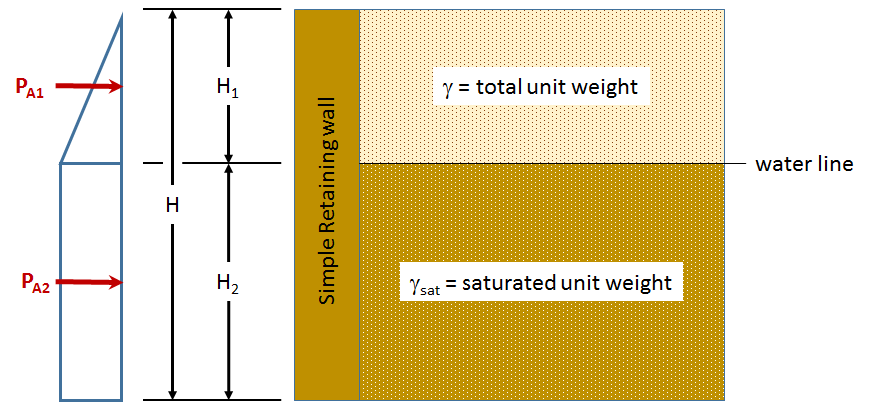Horizontal Stress (Simple Retaining Wall) [W,V]
Tags | |
UUID | 335cfa95-10aa-11e4-b7aa-bc764e2038f2 |
The Horizontal Stress on a Retaining Wall calculator estimates the wall stress based on the angle of shearing resistance, soil depth above the water line, weight of soil sample and volume of soils sample.
INSTRUCTIONS: Choose the preferred units and enter the following:
- (φ) - This is the angle of shear resistance phi characteristics of the soil
- (H1) - This is the soil depth above the water line
- (W) This is the weight of the soil sample.
- (V) This is the volume of the soil sample.
Retaining Wall Stress (σh): The calculator returns the wall stress in Pascals. However, this can be automatically converted to compatible units via the pull-down menu.
Related Calculators
The Math / Science
This equation computes the active horizontal soil pressure on a retaining wall. This equation assumes no cohesion between the soil behind the wall and the surface of the wall and it assumes the wall is vertical.
The inputs are:
- - the total unit weight or weight density of the soil.
- - the angle of shear resistance phi characteristics of the soil
- - the soil depth above the water line
The output horizontal stress or soil pressure is reported in units of Pascal

Notes
The computation of horizontal soil pressure, active pressure, is based here on the Rankine Theory. This theory treats the soil to be in a state of plastic equilibrium.
The shear strength and stiffness of soil determines how stable the soil will be and how much it will deform. Calculating shear strength is used to determine if a slope is stable, if a structure might settle into the ground, and the limiting pressures on a retaining wall.
Soil is a composite of many particles that have little to no cementation. The shear strength of soil is primarily due to inter-particle friction. This means that the shear resistance on a plane is approximately proportional to the effective normal stress on that plane. The angle of internal friction is thus directly related to the maximum stable slope angle, often called the angle of repose.
Equations and Data Items
- Comments
- Attachments
- Stats
No comments |
